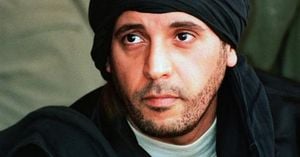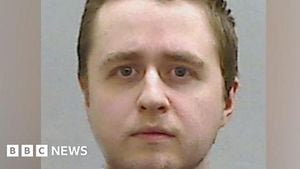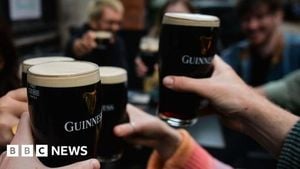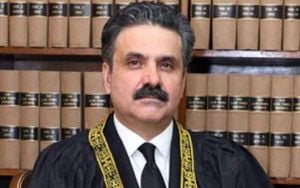On a brisk October weekend, the United States witnessed a surge of civic energy as the “No Kings” protest movement swept through more than 2,600 cities and towns nationwide. Tens of thousands of Americans—from New York’s Times Square to the steps of the Lincoln Memorial—gathered to voice their opposition to President Donald Trump’s leadership, which many demonstrators described as increasingly authoritarian. With the government shutdown dragging into its 18th day, the rallies marked one of the largest and most coordinated acts of resistance since Trump’s return to office.
Organized by a coalition of activist groups, the “No Kings” protests were anything but subdued. According to Newslooks, participants filled iconic public spaces with music, costumes, and banners, blending sharp political defiance with a street-party atmosphere. Demonstrators donned colonial garb, inflatable frog suits, and unicorn costumes, while waving homemade signs and American flags. A massive banner featuring the preamble to the U.S. Constitution made the rounds, collecting signatures as a symbol of renewed commitment to democratic ideals.
“We’re not anti-American—we’re pro-democracy,” declared Brian Reymann, a protester in Washington, D.C., as he waved a large flag. “Calling us terrorists is pathetic. Disagreeing with Trump doesn’t mean we hate this country.” This sentiment echoed across the rallies, as organizers and participants pushed back against Republican leaders’ attempts to brand the events as “Hate America” rallies. Speaker Mike Johnson, for instance, accused attendees of being “Marxists,” “antifa types,” and “people who hate capitalism.” Yet, as Glen Kalbaugh—a demonstrator in a wizard hat and frog sign—remarked, “If the administration leans on theatrics, so will we.”
Safety and nonviolence were top priorities for organizers. Liz Cattaneo, a national rally coordinator, explained, “We’ve had daily briefings. We want people to be safe and unafraid.” Volunteers received training in de-escalation tactics, and yellow bandanas, inspired by historic protest movements in Hong Kong, South Korea, and Ukraine, became a symbol of unity and peaceful resistance. The blend of theatrical costumes and visible commitment to nonviolence made it hard for critics to paint the movement as a threat.
The breadth and diversity of the protests were striking. Cities including Los Angeles, Boston, Chicago, and Atlanta saw crowds in the thousands. In Chicago’s Grant Park, families and activists mingled at the city’s music shell, turning political action into a community celebration. According to Newslooks, demonstrators cited a range of issues fueling their dissent: immigration raids, the ongoing war in Gaza, tax policy, and threats to freedom of speech. “We’re protesting to save what’s left of democracy, not tear it down,” said retired doctor Terence McCormally, who joined the march in Washington before visiting Arlington National Cemetery.
High-profile politicians lent their voices to the cause. Senator Raphael Warnock addressed a massive crowd in Atlanta, declaring, “Trump wants to weaponize despair. But today, he’s getting his answer.” In Washington, Senator Chris Murphy told demonstrators, “This is not how democracies function. Trump thinks he can act with impunity while the government’s closed. He can’t.” Senate Majority Leader Chuck Schumer and Senator Bernie Sanders also joined the rallies, with Schumer vowing, “We will not let democracy fall silently.” Protest organizer Ezra Levin, co-founder of Indivisible, described the day as a major milestone: “There is no greater threat to authoritarianism than patriotic people-power.”
The government shutdown, now stretching into its third week, added urgency to the protests. The standoff over healthcare funding has paralyzed Washington, deepening the sense of crisis. President Trump, meanwhile, remained at Mar-a-Lago in Florida, hosting a high-dollar fundraiser for MAGA Inc. In a Fox News interview, he dismissed the criticism: “They say I want to be a king. I’m not a king.” But protest leaders and participants saw his use of executive power—from military-style immigration raids to efforts to suppress dissent—as evidence to the contrary.
Democrats, after months of internal criticism for not confronting Trump more forcefully, seized the moment to reassert their role as a check on executive power. “We finally see some backbone from the Democrats,” Levin observed. “This is about drawing the line.” The rallies provided a platform for Democratic lawmakers to stand alongside grassroots activists, signaling a renewed commitment to defending constitutional norms.
Republican leaders, for their part, doubled down on their rhetoric. Labeling the protests as “anti-American,” they sought to cast the movement as an attack on national values. But for many demonstrators, patriotism was at the heart of their activism. “We protest because we love America,” read one sign held by a lifelong protester in Manhattan. In city after city, participants described their actions as a defense of democracy, not an act of rebellion. Danielle Guinto, a mother of two in Chicago, summed up her motivation: “I came to be on the right side of history.”
The “No Kings” movement also resonated far beyond U.S. borders. Solidarity rallies took place outside American embassies in Paris, Berlin, Rome, and Stockholm, where demonstrators denounced fascism and expressed support for Americans defending democracy at home. The global outpouring underscored the symbolic stakes of the protests, positioning them as part of a broader struggle for democratic values worldwide.
Personal stories added depth and urgency to the day’s events. In Washington, first-time protester Bobbie Castillo from Lincoln, Nebraska, was visibly moved: “It’s powerful. We just want to be heard.” Her fiancé, Michael Langfeldt, echoed the sentiment: “Congress won’t act. So we are.” These individual voices, woven together with the broader calls for executive restraint and restoration of democratic norms, gave the movement a sense of authenticity and moral clarity.
As National Guard units remained on standby and political tensions simmered, the “No Kings” protests marked a turning point in grassroots resistance to Trump’s administration. The rallies were not just a response to a single moment of crisis but a testament to the enduring power of civic engagement. With costumes, music, and a clear-eyed focus on democratic ideals, demonstrators across the country signaled that, for now at least, the spirit of resistance in America is alive and well.




